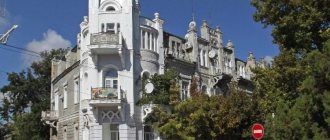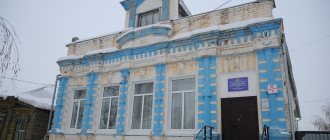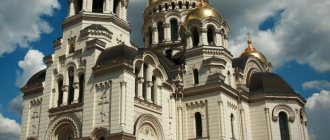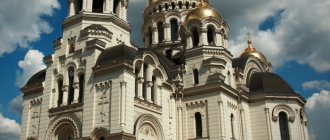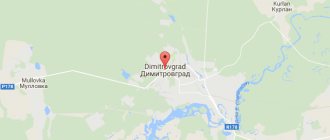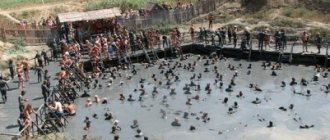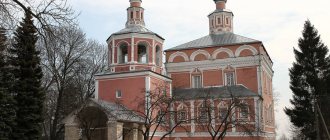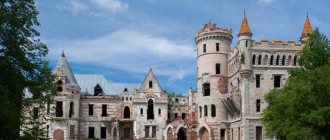Museum of Nature of the Eastern Azov Region
Until 1986, all materials and exhibits about the nature of the Azov region were in the local history museum. It was this year that the foundation of the Museum of Nature of the Eastern Azov Region was laid. The opening took place in 1994. The main theme of all presented expositions was “the nature of the native land.”
Here you can see collections of insects and rare birds that are listed in the Red Book. Dioramas dedicated to the nature of the Azov region were created in the halls. There is a collection telling about rare sea inhabitants; bird eggs from all over the world have been collected.
Excursions are conducted according to age categories. Games and quizzes are held for children and teenagers, while material is presented to adults in the form of lectures. Museum staff continue to study unknown representatives of flora and fauna, and replenish the funds with new exhibits.
Location: Dzerzhinsky street - 261.
City History and Local Lore Museum
The museum was founded in 1976. It is located in a building that was built in the 19th century. Previously, it was a small merchant estate where balls were held, girls in long dresses danced, and local peasants served them.
After a complete restoration of the premises, the halls contain exhibits that tell about the life of merchants and Cossacks - these are household utensils, clothing of rich merchants and poor peasants. In a separate room, material is presented on how the Cossacks were formed in the Kuban region. The museum also presents works that tell about the modern development of Slavyansk-on-Kuban.
Location: Dzerzhinsky street.
New era
After coming to power, the Bolsheviks began to rename the streets of Art. Slavic. The “unprincipled” Bazarnaya began to be called Kovtyukha - in honor of the legendary Red Army commander Epifan Kovtyukha; The “anti-Soviet” Church was named after the fiery commissar Pyotr Grin, who died in battle with the Whites; The “archaic” Aleksandrovskaya acquired the name of the famous revolutionary writer Nikolai Ostrovsky. Of course, it could not have happened without the leader of the world proletariat. Street named after Lenin replaced Nikolaevskaya on the map of the village (in tsarist times, the Nikolaevskaya Church was located on it).
After the renaming of Ekaterinodar, it was quite logical to “rename” the stanitsa Ekaterinodarskaya street: it became Krasnodarskaya. The Gymnasium turned into Pionerskaya, and the Cemetery turned into Stakhanov.
Some “new settlers,” decades after their “usurpation” of the previous street names, became meaningless to the younger generation of Slavs. When asked who Shaumyan and Shchors are, in whose honor Krivaya and Kirpichnaya streets were renamed respectively, a significant portion of the schoolchildren I interviewed could not answer.
After the Great Patriotic War Art. Slavic grew rapidly. Streets and alleys appeared, named after soldiers and officers who became famous for their military exploits: Heroes of the Soviet Union Nikolai Semenovich Ivanov, Evgeniy Andreevich Zikran and others. Sometimes the reason for this was tragic events. For example, Zelensky Street is named in memory of a vigilante who died while apprehending a dangerous criminal.
Holy Assumption Cathedral
One of the main attractions of the city can rightfully be called the Holy Assumption Cathedral. The creator of this architectural masterpiece was Alexander Kosyakin, famous in Kuban. The foundation of the building was laid in 1907, and construction was completed in 1912.
During the work, the architect constantly made adjustments and changes to achieve perfection. After the revolution, the temple became a storehouse for storing grain, and during the Great Patriotic War it was half destroyed and looted. In 1970, Archpriest Nikita Gavrilchik began its complete restoration. When the work was completed, it was decided to build a children's Sunday school, a church library and a baptismal temple nearby.
The interior decoration of the church fascinates with its beauty. A new iconostasis was made, the bells in the belfry were replaced, and the wall paintings were restored. There is a large church choir at the temple. On holidays there are a lot of pilgrims, city guests and local residents.
Location: Zaporizhskaya street - 38.
Art Gallery
The city's art gallery contains materials on various topics. Here you can find works of contemporary artists. In addition to paintings, the halls contain works by masters of arts and crafts.
For example, the “Russian Matryoshka” exhibition tells how the toy appeared, how it was made by artisans in past centuries, and also shows modern technologies for creating Russian souvenirs.
The art gallery workers are proud of the guests who visited them. The famous Bulgarian singer B. Kirov was amazed by what he saw, he left a laudatory note in the guest book and thanked the workers for the interesting excursion.
Location: Shkolnaya street - 320.
Under the Tsar
Every day, when we travel in public transport or walk along the sidewalks, the “headings” of individual chapters of the city’s chronicle—the names of the streets—flash before us. The original names of many of these small monuments of the past are completely forgotten even by old-timers, and others simply have not taken root.
The village streets of the early twentieth century had historical names: Bazarnaya, Torgovaya, Kopylskaya, Cemetery, Gymnazicheskaya. The main street was then Red, and several others were named after churches.
There were also streets in honor of the then bosses. For example, Mishchenkovskaya is named after the ataman of the Temryuk department of the Kuban Cossack army, an honorary old man of the Slavyanskaya village, Major General Mishchenko.
Let us add that some of the neutral names “managed” to survive the tsarist regime, the revolutionary turmoil, and the era of socialism. Among them are Anastasievskaya, Batareynaya, Bolnichnaya, Zaporozhye, Cossack, Krepostnaya, Kubanskaya, Malominskaya, Protochnaya, Tamanskaya.
Church of St. Sarkis
In 2002, the head of the Armenian community turned to the administration of the Slavyansky district with a request to provide a small plot of land for the construction of a temple. Construction lasted about a year.
The church received its name in honor of St. Sarkis. Today it has become not only a religious, but also a cultural center of the region. Within the walls of the church, the local rector conducts Sunday lessons for Armenian children.
Location: Shahumyan street.
St. Panteleimon's Church
Initially, in 1866, on the site where the Church of St. Panteleimon now stands, a small wooden prayer house was built. During its existence, it was completed and rebuilt. It is documented that in 1936 the temple was destroyed by order of the Soviet authorities.
The church territory was given away for the construction of the House of Culture, and the square became a place for folk festivals. In the 90s, Archpriest Nikita Gavrilchik proposed to local authorities to begin construction of a new temple in honor of Panteleimon the Healer. Management approved the proposal and allocated space in the area for a new cemetery. The first service took place in 2004; it coincided with a major church holiday. A few years later, a memorial hall was built at the church, and the service of sisters of mercy was created.
Location: Shahumyan street.
Sights of Slavyansk-on-Kuban
We often hear about architectural monuments that are located in other countries and forget that Russia is a unique country, and each city here has its own historical places that are definitely worth seeing. Such a city is Slavyansk-on-Kuban.
The town is small and is located on the banks of a river called Protoka. There are many fields and gardens around the city. And this is not surprising, because the majority of the local population is engaged in agriculture. In the past there was a fortress and a trading post here. Later, Stanitsa was formed on this site, which became a city.
3 unique sights of Slavyansk-on-Kuban
1. “Brides Alley”
Locals love this park very much. But it does not go unnoticed by tourists. If you pay attention to the name, it becomes clear that newlyweds do not bypass the park. Brides and grooms come here for a reason. They visit castles of love. And those who want to get married do it in the Alexander Nevsky Church.
Anyone can come to this park. Photographers also love it because they take great pictures.
2. Temple of Alexander Nevsky
The church is young and was built at the request of local residents. The first stone was laid in the early 2000s. The temple has not yet been completed, but believers can come here and pray.
The structure is unique. The temple does not attract attention, but you want to look at it and look at it. The temple area is constantly being improved.
3. St. Panteleimon Church
But this temple has a centuries-old history. Once upon a time there was a small prayer house on the territory of the church. It was built for a long time, then rebuilt. Over time, the prayer house turned into a church.
The advent of Soviet power had a negative impact on the church. The temple was almost completely destroyed and a House of Culture was erected in its place. Believers worried about this for a long time and looked for ways to build a new church.
This opportunity arose only after the collapse of the Soviet Union. But it was not possible to do this at the historical site. A new location was chosen and the temple was moved to the area of the new cemetery.
Construction continued until the early 2000s. The temple is open to parishioners, and recently the sisters of mercy service began working here.
But these are not all the attractions of Slavyansk-on-Kuban. There are many monuments dedicated to the heroes of the Great Patriotic War in the city. You should definitely look at them and remember the people who defended our Motherland from the fascist invaders.
Recreation Park "40 Years of Victory"
The opening of the city recreation park took place on May 8, 1985, and was timed to coincide with the 40th anniversary of Victory Day. By Soviet standards, it was an entire entertainment complex with attractions for children, park alleys, fountains, a summer stage and a theater area. Today, the park still attracts vacationers; at the beginning of 2000, the swings for children were updated to be safer and more modern. Various folk festivals and public events are held in the park.
Location: Krasnaya street.
Didn't take root
Sometimes the new did not take root.
“Mishchenkovskaya first received the name of Rosa Luxemburg, and later - the Young Communards,” said the famous Slavic local historian Alexander Vitalievich Bogachev.
Another example is an attempt to rename Otdelskaya Street (as it was called in tsarist times) into st. 60 years of the formation of the USSR. In some places there are even rusted signs with this name on the houses. In the early 1980s, an initiative spread throughout the USSR: in honor of the anniversary of the founding of the first socialist country, streets, enterprises and shops should be named in a new way. However, the Slavs stubbornly called Otdelskaya in the old way. As a result, the name of the street has been preserved to this day.
Why does this happen? I asked about this from a prominent specialist in the “language of the city”, Doctor of Philology, Professor of Novgorod State University. Yaroslav the Wise T.V. Shmeleva, who came to one of the festivals of Slavic culture.
“The issue is especially about human perception of “digital names,” explained Tatyana Viktorovna. — Most of us have a hard time remembering ordinal numbers in proper names. Agree, official names like “16th Parkovaya” or “2nd Railway” are harsh on the ears.
Is this why the bureaucratic “Park named after” did not take root in Slavyansk? 40th anniversary of the Victory"? The vast majority of townspeople traditionally call the park the Square of Memory, often adding “at the Eternal Flame.”
